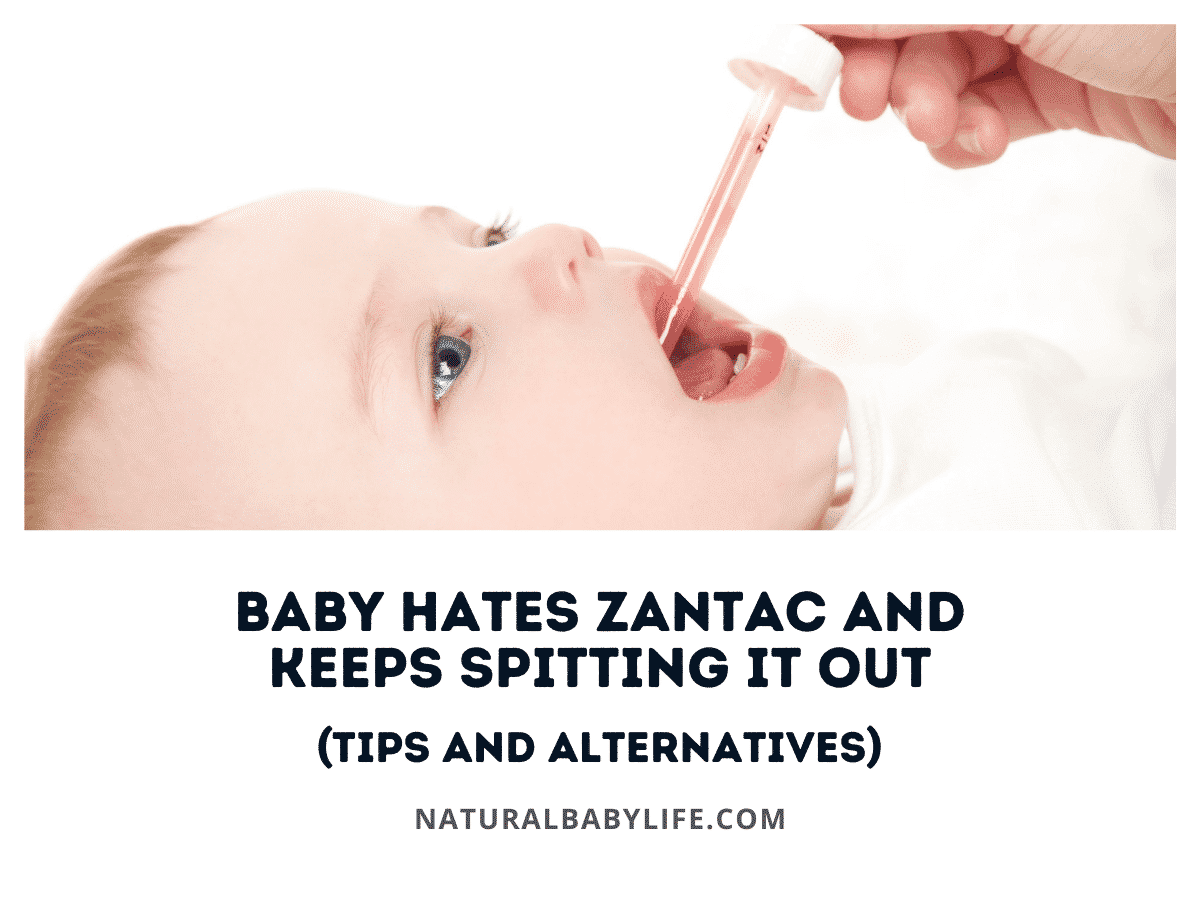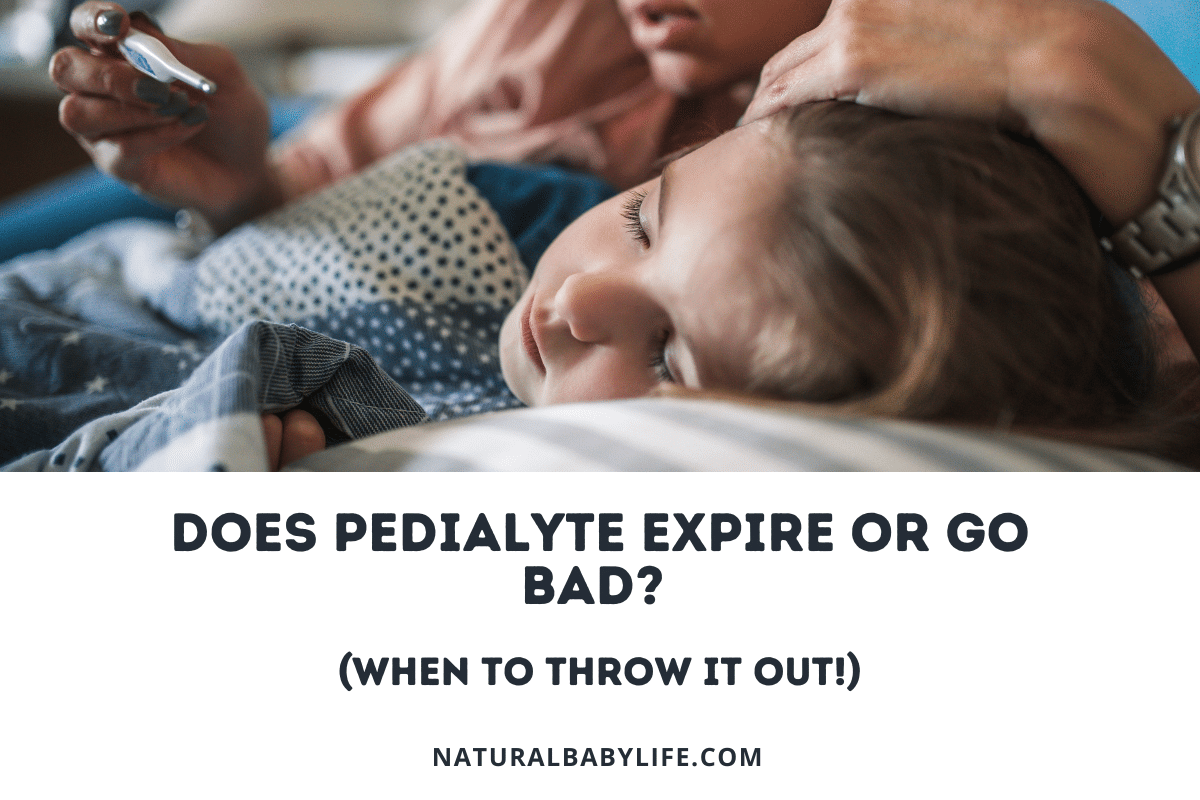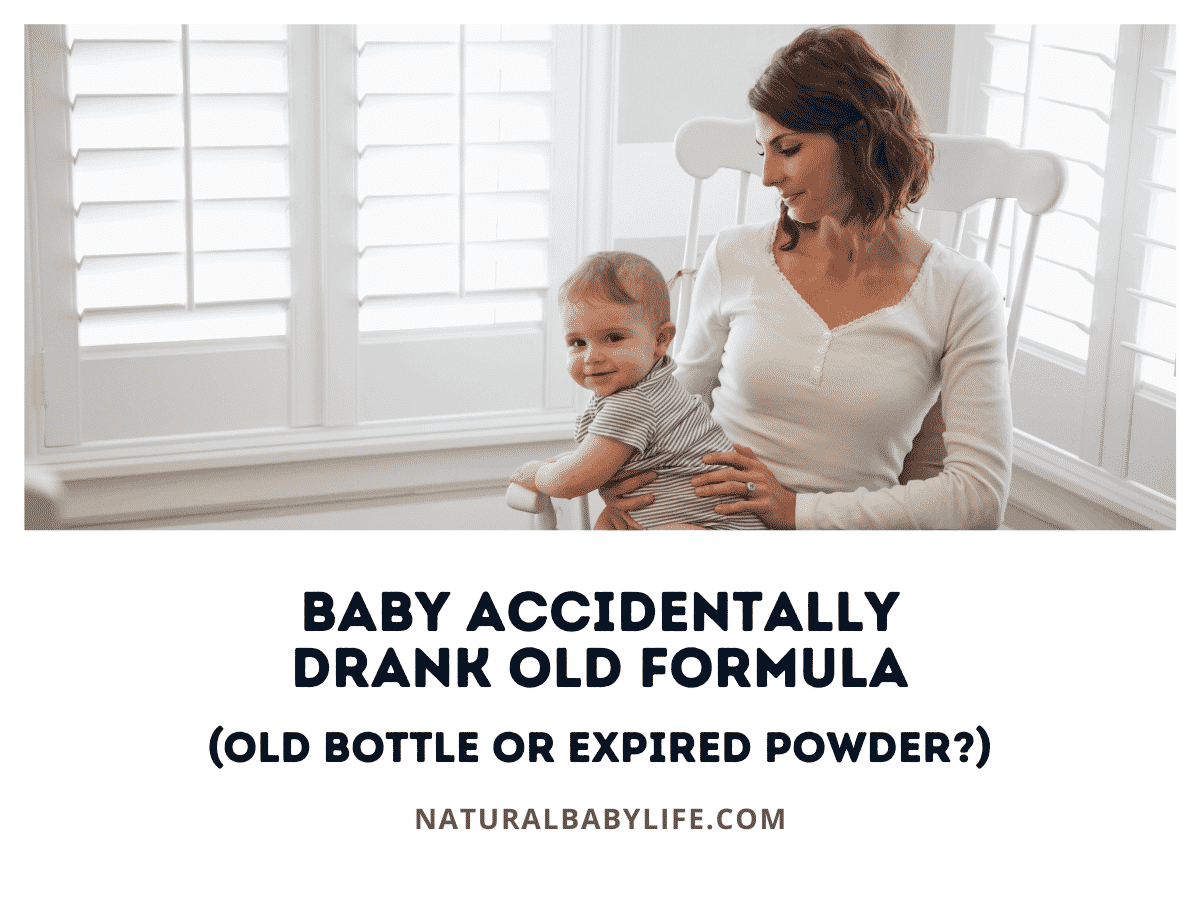So your baby is having some issues with acid reflux and their doctor prescribed Zantac to help. It all sounds great until it’s time to actually administer the medication. Suddenly your baby is making faces and they are spitting more medicine out than they are swallowing. What can you do?
If your baby has been prescribed Zantac for acid reflux, you’re likely to encounter some resistance. Try placing the syringe against your baby’s cheek or towards the back of her mouth and slowly administer small amounts at a time, ideally thirty minutes before mealtime. You can also ask your pharmacist to flavor the medicine to make it taste better.
Read on to find out some other tips for getting your baby to take their Zantac as well as learn a little background information about the medication itself and its safety in infants.
Table of Contents
How can I get my baby to take Zantac?
Infant Zantac comes in a liquid syrup that is administered orally via a syringe or dropper.
Once you have measured the prescribed dosage into the syringe, place the syringe inside the infant’s mouth against their cheek or in the back of their mouth. Insert small amounts of the medicine slowly and allow your baby time to swallow fully before giving more.
This will not only enable them to take the Zantac more easily but also ensure that if they do spit it out only a small amount is lost.
Can I mix Zantac into a bottle?
If your baby has a hard time taking their medicine you may be tempted to mix it in with their bottle. However, it is recommended to take Zantac thirty minutes before meals for maximum effectiveness. There could also be issues with diluting the Zantac when mixed with formula or milk in the bottle.
My baby won’t keep Zantac down
If your baby is having trouble keeping their Zantac down, there are a few tips that may help.
Try placing the syringe of medicine in your baby’s mouth either on the inside of their cheek or in the back of the mouth. Give your baby small amounts of medicine at a time making sure they have time to swallow in between.
If your baby is making faces when you give the Zantac, your pharmacy can put some flavoring in it to make it taste less bitter. Also, if your baby takes a pacifier you can give the pacifier to him/her after giving medication to encourage the baby to swallow. T
his medication is supposed to be given thirty minutes before mealtime to get maximum effectiveness but this also decreases the likelihood that it will be spit back up.
What is baby Zantac used for?
Zantac (also known by its generic name Ranitidine) is a drug that helps alleviate acid reflux and GERD symptoms by reducing the amount of acid produced in the stomach. This drug functions as a histamine H2 antagonist.
While many of us may already have this in our own medicine cabinet, this is not the type of Zantac approved for use in babies.
Infant Zantac is only available by prescription from your child’s doctor and is dosed based upon your child’s weight usually between 5-10 mg/day divided into 2 or 3 doses.
Does my baby need acid reflux medicine?
All babies spit up. In fact, it’s not uncommon for babies to spit up several times throughout the day. This normal type of spit-up should not bother your baby. If you notice your baby starting to act fussy or irritable while they are spitting up, you may want to consider a trip to the doctor.
GERD, or Gastroesophageal reflux disease, is a condition where the muscle at the lower esophageal sphincter of infants is not fully mature which allows stomach acids to rise back up into the esophagus.
Symptoms of GERD in babies include:
- Back arching, usually during or after feeds
- Gagging or trouble swallowing
- Colic
- Coughing
- Irritability
- Pneumonia
- Poor feeding/ refusing to eat
- Poor growth and weight gain
- Vomiting
- Weight loss
- Trouble breathing or wheezing
If your baby is healthy, happy, and growing well their spit-up is probably a completely normal part of infanthood. However, if your baby is exhibiting any of the above symptoms it may be time to visit the doctor to see if there is any medication needed to ease their discomfort.
Not all cases of acid reflux require medication. Sometimes your baby’s doctor may suggest dietary changes or having him remain upright for 30 minutes after eating.
Should I give my baby Zantac?
Your baby’s doctor will help guide you with the decision of whether any medication is needed for your baby’s reflux.
It’s important to see the doctor first because a prescription for the baby version of Zantac will be needed as well as correct dosage information based on your baby’s weight. It is not safe to give your baby the version of Zantac intended for adults.
Only give baby Zantac under doctor supervision.
At what age can babies take Zantac?
Zantac has been approved for use in infants starting as young as four weeks old.
Is Zantac safe for babies?
Zantac has been prescribed to infants for over 30 years as a way to alleviate acid reflux symptoms.
The infant version of Zantac is prescribed in a liquid syrup form and the dosage is determined based on baby’s weight. Pay close attention to the dosage prescribed to prevent overmedication.
Even if your baby is accidentally given more than the prescribed dosage, Zantac is generally safe and tolerated well.
Another pressing concern for using Zantac, or ranitidine, in babies is the recent market withdrawal due to small levels of N-nitrosodimethylamine, a probable human carcinogen, found in the drug.
Voluntary recall
Starting in the summer of 2019, the FDA was notified of findings of N-nitrosodimethylamine, or NDMA, in both over-the-counter and prescription versions of Ranitidine, the generic version of Zantac. The FDA then did its own laboratory testing and found low levels of NDMA in Ranitidine.
The main concern of these levels of NDMA is that they had been found to increase in significant amounts when exposed to higher temperatures, including temperature conditions that would be used to distribute the drug and in customer’s homes.
This concern led the FDA to request the removal of this product from the market In April 2020. If you have any concerns about this recent recall please contact your doctor for further guidance.
Long-term side effects
Like all medications, there are some potential long term side effects to consider.
A recent study found that infants that took H-2 blockers such as Zantac had an increased risk of bone fracture over time.
This study also found that the younger the child was when they started taking H-2 acid suppressants, the higher the fracture risk became. The children most at risk were infants under 6 months old.
How can I treat my baby’s reflux naturally?
Sometimes no matter what you do, your baby just may not take the medicine successfully.
There may be some more natural alternatives to Zantac for treating acid reflux in your baby if you’re having this issue or if you are just uncomfortable with the idea of giving this medication to your baby.
Feed baby upright
One of the main reasons babies are more prone to spit up and acid reflux is the amount of time babies spend lying flat. A way to help this is to feed your baby in an upright position.
You want to keep your baby’s entire body in an upright position and make sure that their head is elevated above their stomach.
The downside to this is that your baby may not enjoy feeding in this position. It may take some coaxing the first few times for your baby to get the hang of things.
Hold baby upright after feeding
One sure way to help your baby’s reflux is to hold your baby in an upright position for 30 minutes after each feeding. Try to avoid placing your infant in a seated upright position as this can sometimes cause pressure on the stomach and may make reflux worse.
The good news is that your baby will probably enjoy this extra snuggle time. However, doing this after every feed can take a lot of time and may interfere with your baby’s nap routine.
Pacifier
Many parents have conflicting opinions on the use of pacifiers. However, if your baby uses one and suffers from acid reflux you may be in luck.
A recent study found that giving a baby a pacifier after feeds while in an upright, seated position may be useful in reducing reflux. This study also concluded that giving an infant a pacifier in the prone position after eating did not help reflux and could actually make it worse.
If your baby already uses a pacifier, there really are no drawbacks to using this method to help with reflux!
Gripe water
Gripe water is a medication available over the counter that contains different ingredients such as herbs and sodium bicarbonate.
Gripe water claims to be able to help with gas, hiccups, teething pains, and even tummy troubles. Many parents swear by this product in easing their little one’s colicky discomforts.
Although there are no real medical claims that gripe water helps acid reflux, this all-natural product could be worth a try.










